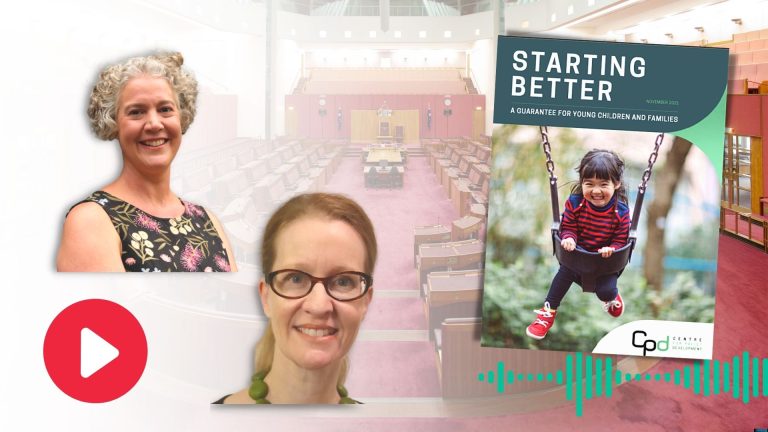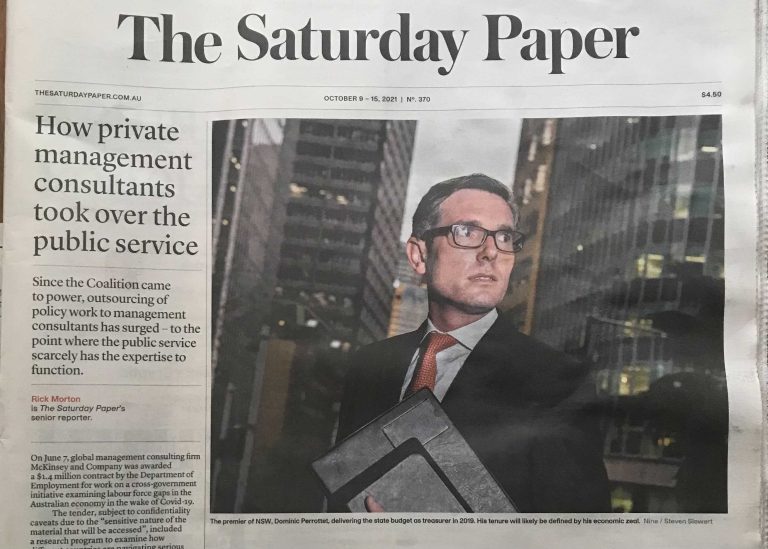The Centre for Policy Development, which originated from an online policy portal, is very interested in expanding the circle of citizens involved in the research and development of policy ideas.
- Our prototype Sustainable Economy Ideas Index tested out the application of crowdsourcing to the task of making great green policy ideas easier to find and understand.
- We provide a creative-commons licensed rss feed of regular ‘Thinking Points’ on current policy debates at http://cpd.org.au/category/thinking-points/, and have switched to creative commons licensing for all new policy papers.
- We used a wiki (http://insightgov20.wikispaces.com/) to plan & gather contributions & ideas for the latest edition of InSight.
- As far as we can tell, we’re the only think tank in the country that enables comments on our policy papers.
They’re little things, but they add up to hunch that think tanks, and progressive think tanks in particular, should be more transparent and collaborative about how we do our work.
We’d like to start thinking about what CPD2.0 would look like.
Many of the challenges described in Upgrading Democracy also apply to think tanks, which have traditionally had a very closed culture – in fact exclusiveness and opacity is at the heart of the traditional think-tank business model.
We suspect there might be another way.
CPD’s main reason for existing is to help make good ideas matter. It’s not enough just to research and develop policy options & play with progressive ideas – although it is fun. Our measure of success is how much value we’ve added to those ideas along the way. Are they better-researched and better thought out because we’ve worked on them? Are they better communicated? Have they reached & inspired more people? Are policy makers more likely to consider an idea seriously as a result of the research we’ve done?
The question is whether we can be more effective (or at least not less effective) at making good ideas matter by further opening up each step of that task.
We’ve tossed around a few ideas on what a thinktank2.0 might look like:
- Tools like http://transparencycorps.org/campaigns might make it possible to crowdsource the research for some kinds of papers
- Sites like http://kickstarter.com (if it’s ever available outside the US) might make it possible to crowdfund specific research projects and publications
- The growth of great data visualisation tools might make it easier to turn the results of our research into stories that anyone can understand
- We could open source the code of our website (currently drupal & civicrm with a few custom tweaks) – especially any future thinktank2.0 development projects
- We could post prospective research ideas on some kind of ticketing system (or a user feedback system like uservoice) so that it’s clear where our research agenda’s coming from, and easier for people to volunteer as research assistants etc on specific projects
- We could release public beta versions of research papers (i.e. public drafts), say on a blog with the digress.it plugin, with current peer reviewers and others providing feedback, fact-checking & proofreading in the open
There are a few important differences between CPD and transparency heroes like OpenAustralia. The idea above about putting out beta versions of papers is a good example of this – when pitching papers to the media, journos like to know they’re getting something new, ideally exclusive – not a piece that has already been thrashed over on a public website for weeks. And although we know that audiences are shifting online, media coverage is still one of the most effective ways to ensure our researchers’ ideas have an impact.
Most think tank websites run on a broadcast model – if they just amend that by enabling comments, very few comments are made. I suppose this shouldn’t be that surprising, but I’m still a little dismayed when I head to some of my favourite think tank websites & find that they feel a little like ghost towns! More importantly, from what I’ve seen, when websites are able to shift to a more interactive model & attract more participation, it can sometimes be at the expense of what it is most unique and valuable about what a think tank does – in-depth analysis and long-term horizons.
Despite these challenges, we think there’s a lot of potential to tweak the think tank model for a more open & collaborative era, & we’d love your ideas about how CPD could do this in the comments below.
If you have web skills & a little spare time we’d also love some help on our wishlist of interesting thinktank2.0 projects (and on solving some tetchy problems with the core site that are stopping us from experimenting with this kind of thing): http://cpd.org.au//volunteer.



